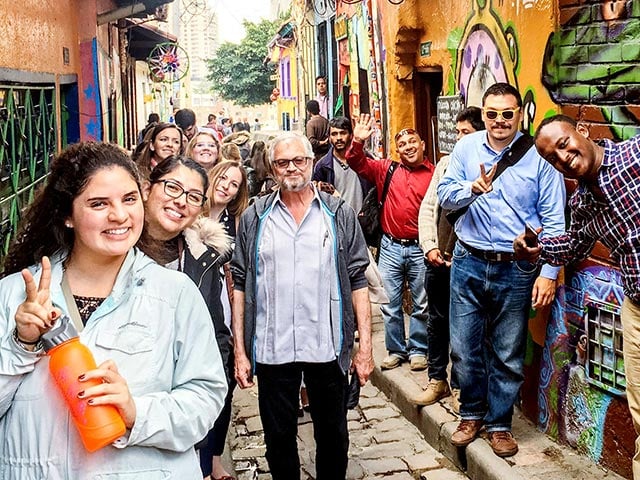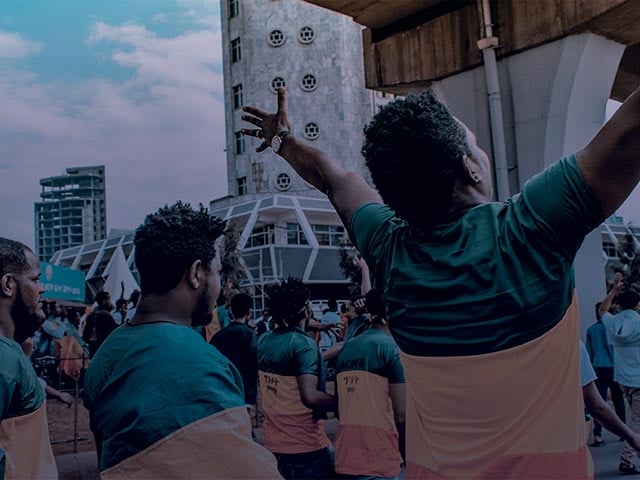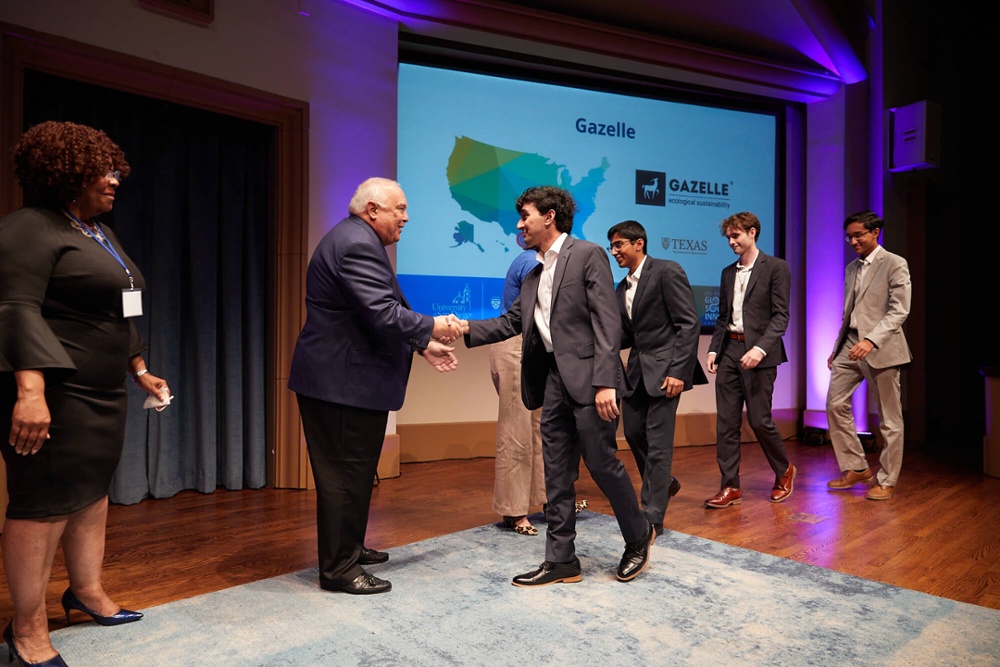Building Peace in Our Cities During a Pandemic: Digital Threats & Urban Violence Prevention


Authored by Zander Willoughby, Program Manager of +Peace, PiOC Co-Facilitator
Peace in Our Cities is an initiative co-facilitated by Pathfinders for Peaceful, Just and Inclusive Societies, Impact:Peace, and +Peace, launched in September 2019. It gathers 18 cities and more than two dozen partner organizations. It acts as a platform to: 1) amplify knowledge of the scale of the urban violence problem and the promise of evidence-based solutions to save lives and heal communities, 2) support city leaders and partner organizations in efforts to reduce the most serious forms of violence in their cities, and 3) advance innovative and evidence-based policies for violence prevention and reduction in an urban context.
Peace in Our Cities co-facilitator Impact:Peace is currently undertaking research examining the impact of COVID-19 on areas of violence in cities around the world. The six-part research agenda, conducted as part of the FCDO-funded project, ‘Peace in Our Cities in a Time of Pandemic,’ will be accompanied by this blog series in an effort to distribute experiences, best-practices, knowledge, and the most pressing questions faced by Peace in Our Cities members.
Interested in joining Peace in Our Cities? Get in touch by emailing team@peaceinourcities.org and share your insights and questions on social media by following #PeaceInOurCities on Twitter.
The public square is shifting online. This was increasingly the case before the pandemic as younger generations are increasingly ‘digital natives.’ During COVID-19, the public square is primarily online for both digital natives and digital immigrants. As our work and social interactions shift online, so too do threats of urban violence. Social media digital threats are virus-proof, cheap, and accessible recruitment and acceleration tools for in-person physical violence. Thankfully, so are social media-based urban violence prevention strategies.
Cities are inherently interconnected and interdependent areas where people are likely to be active on social media platforms like Facebook, Instagram, TikTok, Twitter, and Weibo and teleconferencing platforms such as Zoom, Teams, and Webex. Such high digital connectivity brings greater exposure to disinformation, misinformation, and cyberthreats. There implies both an opportunity and an obligation for cities and local governments to prevent and mitigate the risks that come with digital threats on social media.
During a February webinar, Peace in Our Cities members discussed how cities can address these opportunities and obligations, informed by the Digital Threats & Urban Violence Prevention evidence brief written by Lisa Schirch. The brief outlines how the risk of digital threats on social media has increased during the pandemic and how cities can leverage social media to interrupt cycles of violence to mitigate negative social media trends. Dr. Schirch lays out social media harms in cities during COVID-19 such as information access, pandemic disinformation, xenophobia and identity-based violence, organized crime and violence, violent extremism, and gender-based violence. The brief also lays out key recommendations for how cities can rise to the challenge of mitigating digital threats to build peace in our cities, including:
- Gather Digital Information for Violence Prevention
- Use Ad Campaigns to Prevent Violence
- Promote Fact-Checking and Digital Literacy to Debunk Disinformation
- Provide Public Information via Chatbots, Websites, and Apps for Violence Prevention
- Offer Individual Counseling and Group Meetings via Social Media to Prevent Violence
- Host Hackathons, Games, and Contests for Violence Prevention
- Follow and Make Available Safety Guidance for Digital Violence Prevention
These recommendations are not merely aspirational wishes for a more peaceful world. They concretely reflect peacebuilders’ work during the pandemic to build safer communities online and off. Taiwan’s Digital Ministry has used the social media polling platform, Polis, to meaningfully scale the digital public square to crowdsource ideas and consensus around COVID-19 policies. In Cape Town, South Africa, the Centre for Analytics and Behavioural Change (CABC) uses social media to track and analyze xenophobic rhetoric and narratives around COVID. In India and beyond, Peace in Our Cities member Safecity empowers “communities, police and city government to prevent violence in public and private spaces” through crowdsourced sexual and gender-based violence reporting and mapping. The WHO has developed a WhatsApp messaging service to directly deliver COVID-19 health information to over 2 billion WhatsApp users in 15 different languages.
Cities worldwide have responded to the social effects of COVID-19 with social media campaigns promoting not only public health information but also information that cuts to the roots of social determinants of violence and peace. The I Choose Sport campaign in Uzbekistan lifts up national athletes as positive role models. To foster greater empathy and understanding to combat false xenophobic rumors around migrants and refugees and COVID-19 in Mexico City, the International Organization for Migration ran a social media campaign to underscore the importance of human rights and avoiding hate speech and xenophobia online. In Abuja, Lagos, and elsewhere in Nigeria, the #IDeyWithHer campaign challenges gender-based stereotypes that perpetuate violence against women.
During the Peace in Our Cities webinar on Digital Threats & Urban Violence Prevention, respondents included Peace in Our Cities partners and friends from Dayton, Ohio, and Mechelen, Belgium. Partners in Dayton, Ohio shared how digital strategies in Dayton have been signs of, and important ingredients to building community resilience following several difficult years before COVID as the region Dayton finds itself in has been an epicenter of the opioid crisis, economic change, and far-right mobilization. A 2019 mass shooting in Dayton rocked the community. The community responded with digital cultural and narrative strategies such as the #DaytonStrong and #DoSomething campaigns in a community with a history of using storytelling and narrative work to bring the community together.
Like communities worldwide during the pandemic, Mechelen has seen an increase in xenophobia against migrants and people of Asian descent, public health misinformation, and opposition to public health mandates. Mechelen has a long history of violence prevention work. When the pandemic started, taking their primarily in-person work on-line to protect public health required significant investment in experimentation, strategy development, and authenticity. As cities and peacebuilders pivot to digital strategies on social media, we must adopt entrepreneurial mindsets and be willing to experiment with new tools and strategies. Mechelen has done this by organizing an online Twitch tournament to create a safe space for youth in the community to connect with professionals and build rapport—bringing peacebuilding strategies to the digital public square. They feel optimistic about the strategy but highlight the importance of coming into a new strategy with authenticity because digital native youth can spot inauthentic engagement from the start. One outstanding question for cities, violence prevention practitioners, and peacebuilders to grapple with is how digital threat mitigation strategies translate to offline interventions. Once we identify the social and structural determinants of violence, what is our next step?
As stay-at-home restrictions continue into the second year of the pandemic and we look ahead to a physical-digital hybrid world as vaccines roll out worldwide with supply chain challenges and public health access inequities, the line between the digital and physical public square will continue to blur. Digital threats to urban safety on social media may increase in scope, prevalence, and complexity - as we work towards the goal of halving urban violence by 2030, our digital violence prevention and peacebuilding strategies must proactively respond appropriately. Going forward, cities must invest in their social media presence and continue to share lessons learned on what works, support one another, and rise to the challenge.

About the Author
The Joan B. Kroc School of Peace Studies (Kroc School) at the University of San Diego is the global hub for peacebuilding and social innovation. Founded in 2007, the Kroc School equips the next generation of innovative changemakers to shape more peaceful and just societies. We offer master's degrees in peace and justice, social innovation, humanitarian action, conflict management and resolution, and a dual degree in peace and law — programs that have attracted diverse and dynamic students from more than 50 countries. In addition to our graduate programs, the Kroc School is home to the Kroc Institute for Peace and Justice (Kroc IPJ). Founded in 2001, the Institute supports positive change beyond the classroom. Through groundbreaking research, experiential learning, and forward-thinking programs, the Kroc School and Kroc IPJ are shaping a future in which peaceful co-existence is the new normal.





